#ionosphere
Text
Small, low-cost sensors developed by space scientists at The University of Texas at Dallas to study the Earth's upper atmosphere recently—and unexpectedly—provided information about the sun, something the devices were not designed to do.
The devices, called ionospheric scintillation monitors, or ScintPi sensors, will be in the spotlight again as UT Dallas researchers deploy them to collect data during the April 8 total solar eclipse and make them available for citizen science projects.
Continue Reading.
42 notes
·
View notes
Text


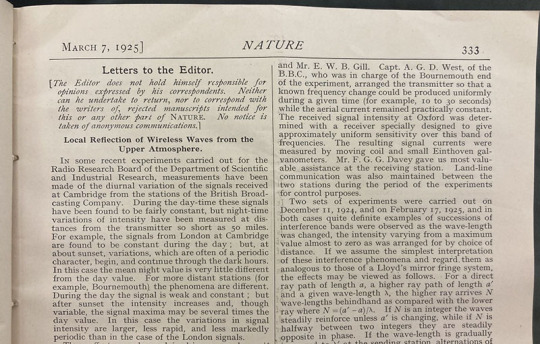

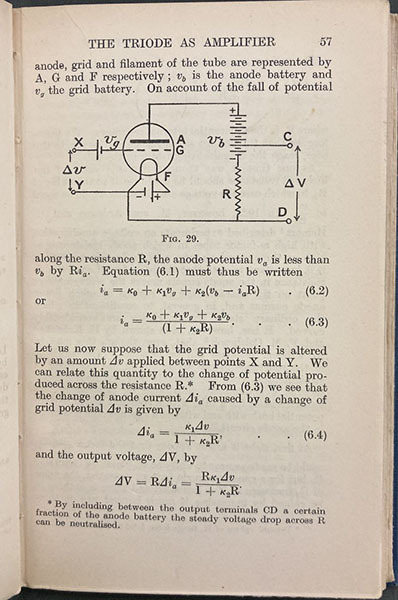

Edward Victor Appleton – Scientist of the Day
Edward Victor Appleton, an English physicist, was born Sep 6, 1892, in Bradford, West Riding, Yorkshire.
read more...
#Edward Victor Appleton#physics#radar#triodes#ionosphere#histsci#histSTM#20th century#history of science#Ashworth#Scientist of the Day
21 notes
·
View notes
Text

they are hosting a charity stream
#Larry doesn’t wanna be here but he’s doing it for the fans#larry#larry pokemon#gym leader iono#ionosphere#pokemon iono#iono#pokemon#pocket monsters#elite four larry#gym leader larry#pokemon scarlet fanart#pokemon violet#pokemon scarlet and violet#pokemon violet fanart#pokemon scarlet#larry fanart#pokemon larry#iono pokemon#procreate#anipoke#anime#i heart anime girls and old men <3
121 notes
·
View notes
Photo





"What has jamie been up to the past few months...?" why, making a comic for Ionosphere, of course :]
Space! Tech! Time loops! Gamers! Food reviews! Post-apocalyptic wastelands! it's 120 pages of crazy good Sci-Fi coming at you HOT across a wicked range of B/W art styles and emotions 🌟 organized by @mashazart, penned and inked by indie comickers like yours truly.
book $20, PDF $5, preorder here (may 1 - may 31):
https://iznankapress.bigcartel.com
follow @iznankapress for more previews and other news!
#comics#indie comics#science fiction#comic#ionosphere#aimlessly#shu#hu#hundun#flash drew#artists on tumblr
12 notes
·
View notes
Text





I had absolutely no idea that they made lightning bolt shaped molds, so the second I saw one I just had to buy it. It’s perfect for this project.
But let me tell you, working with this shape is a nightmare. I went through at least four attempts at cutting out the art to fit inside, and when I finally got it in I was too frustrated to even notice that the floaties at the very bottom are permanently stuck because I wasn’t careful enough. -__- Luckily I love Iono and she’s cute, so it’s not all that bad.
If I do decide to have something like this in my shop it’ll be made to order and I’ll take a few at a time. And I swear, the craftsmanship will be better than this. The crooked studs are driving me insane too.
Here’s the mold from HappyKawaiiSupplies! ===> https://www.etsy.com/listing/1281167582/kawaii-lightning-bolt-shaker-mold-for?ref=yr_purchases
#iono#ionosphere#iono pokemon#pokemon#pokemon scarlet and violet#iono pkmn#iono gym leader#resin#handmade#etsy#craft#shaker#keychain#kawaii
15 notes
·
View notes
Photo


I wish to see G O D .
3 notes
·
View notes
Text
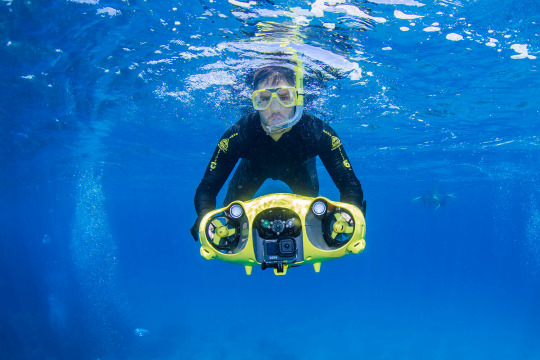
8 unités a disposer dans la salle de plongée Professeur?
Adjugé!
Il permet également d'inspecter le navire Professeur ou de faire de la reconnaissance sans recourir a un plongeur
Tout a fait, c'est un plus indéniable pour le navire
Voici les principaux points de la documentation technique
SUIVI SANS FIL
PAR SONAR ET VISION
Les technologies de pointe brevetées d’iBubble evo
permettent de suivre un plongeur facilement. La
reconnaissance visuelle améliore le suivi du plongeur
en temps réel tandis que le sonar permet l’évitement
d’obstacle automatique.
SCÉNARIOS DE FILM
AUTOMATISÉS
Les scénarios de film automatisés d’iBubble evo lui permette
d’adopter des angles de prise de vue à couper le souffle
et donne ainsi une vrai sensation de prise de vue
professionnelle aux images capturées par iBubble evo.
DES ANGLES
DE PRISE DE VUE UNIQUES
Sous l’eau, la télécommande iBubble evo vous donne la possibilité de choisir un scénario de film à distance parmi une large sélection de scénarios. Ces différentes options de scénarios automatisés donneront un cachet particulier à chacune de vos plongées et vous deviendrez le réalisateur de vos propres films. Les 7 moteurs d’iBubble evo lui donnent une stabilité et une mobilité sous-marine inégalées. iBubble evo deviendra votre cameraman sous-marin personnel.
UN DRONE SOUS-MARIN
POLYVALENT
iBubble evo est conçu pour s’adapter à tous vos besoins. Ses différents modes automatisés vous offre la possibilité d’utiliser votre drone comme un scooter sous-marin ou de le transformer en un ROV agile que vous pouvez piloter de la surface. En effet, la borne wifi câblée Explorer vous donne l’opportunité d’explorer les profondeurs sous-marines du confort de votre bateau.
7 MOTEURS
PUISSANTS
Grâce à ses 7 moteurs, iBubble evo offre une mobilité et
une stabilité jamais vues pour des prises de vues uniques.
iBubble evo est capable de se déplacer rapidement, en dépit
des courants et de suivre un plongeur sans aucune difficulté.
ENREGISTREZ ET PARTAGEZ
VOS PLONGÉES FACILEMENT
iBubble evo est le premier drone sous-marin autonome et sans fil. C’est le compagnon de plongée idéal. Conçu pour un usage facile, il suit et filme votre plongée en adoptant des angles uniques. Vous serez en mesure de partager vos aventures sous-marines d’une manière totalement nouvelle. Allumez-le, mettez-le à l’eau, choisissez votre scénario de mouvement intégré et laissez iBubble evo s’occuper de la prise d’images.
UNE TECHNOLOGIE À LA POINTE
FABRIQUÉE EN FRANCE
Profitez de votre plongée, iBubble evo vous suit. Le drone est autonome et filme votre plongée en évitant les obstacles automatiquement. Il vous suit facilement grâce à ses technologies de reconnaissance visuelle automatique et de sonar brevetées. iBubble evo vous permet de profiter de vos aventures sous-marines sur une durée allant jusqu’à 1h30, ou plus grâce à ses batteries interchangeables.
FACILE D'UTILISATION
EN TOUTE SÉCURITÉ
iBubble evo est un drone sous-marin hors du commun. Intuitif et facile d’utilisation, il est également compact et léger (9kg). Son design hydrodynamique élégant facilité sa prise en main. Légèrement flottant, iBubble evo remontera automatiquement à la surface pour être facilement récupéré s’il perd votre signal.
2 notes
·
View notes
Text
Geophysical Alert Message wwv



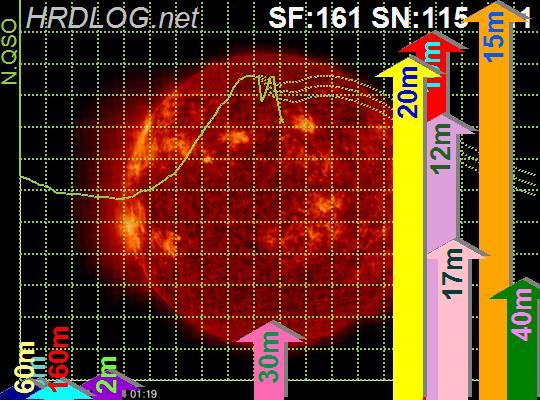

:Issued: 2024 Apr 14 1205 UTC
# Prepared by the US Dept. of Commerce, NOAA, Space Weather Prediction Center
#
# Geophysical Alert Message
#
Solar-terrestrial indices for 13 April follow.
Solar flux 161 and estimated planetary A-index 5.
The estimated planetary K-index at 1200 UTC on 14 April was 2.00.
Space weather for the past 24 hours has been minor.
Radio blackouts reaching the R1 level occurred.
Space weather for the next 24 hours is predicted to be minor.
Geomagnetic storms reaching the G1 level are likely.
0 notes
Text
MIT Haystack scientists prepare a constellation of instruments to observe the solar eclipse’s effects
New Post has been published on https://thedigitalinsider.com/mit-haystack-scientists-prepare-a-constellation-of-instruments-to-observe-the-solar-eclipses-effects/
MIT Haystack scientists prepare a constellation of instruments to observe the solar eclipse’s effects


On April 8, the moon’s shadow will sweep through North America, trailing a diagonal ribbon of momentary, midday darkness across parts of the continent. Those who happen to be within the “path of totality” will experience a total solar eclipse — a few eerie minutes when the sun, moon, and Earth align, such that the moon perfectly blocks out the sun.
The last solar eclipse to pass over the continental United States occurred in August 2017, when the moon’s shadow swept from Oregon down to South Carolina. This time, the moon will be closer to the Earth and will track a wider ribbon, from Mexico through Texas and on up into Maine and eastern Canada. The shadow will move across more populated regions than in 2017, and will completely block the sun for more than 31 million people who live in its path. The eclipse will also partly shade many more regions, giving much of the country a partial eclipse, depending on the local weather.
While many of us ready our eclipse-grade eyewear, scientists at MIT’s Haystack Observatory are preparing a constellation of instruments to study the eclipse and how it will affect the topmost layers of the atmosphere. In particular, they will be focused on the ionosphere — the atmosphere’s outermost layer where many satellites orbit. The ionosphere stretches from 50 to 400 miles above the Earth’s surface and is continually blasted by the sun’s extreme ultraviolet and X-ray radiation. This daily solar exposure ionizes gas molecules in the atmosphere, creating a charged sea of electrons and ions that shifts with changes in the sun’s energy.
As they did in 2017, Haystack researchers will study how the ionosphere responds before, during, and after the eclipse, as the sun’s radiation suddenly dips. With this year’s event, the scientists will be adding two new technologies to the mix, giving them a first opportunity to observe the eclipse’s effects at local, regional, and national scales. What they observe will help scientists better understand how the atmosphere reacts to other sudden changes in solar radiation, such as solar storms and flares.
Two lead members of Haystack’s eclipse effort are research scientists Larisa Goncharenko, who studies the physics of the ionosphere using measurements from multiple observational sources, and John Swoboda, who develops instruments to observe near-Earth space phenomena. While preparing for eclipse day, Goncharenko and Swoboda took a break to chat with MIT News about the ways in which they will be watching the event and what they hope to learn from Monday’s rare planetary alignment.
Q: There’s a lot of excitement around this solar eclipse. Before we dive into how you’ll be observing it, let’s take a step back to talk about what we know so far: How does a total eclipse affect the atmosphere?
Goncharenko: We know quite a bit. One of the largest effects is, as the moon’s shadow moves over part of the continent, we have a significant decrease in electron, or plasma, density in the ionosphere. The sun is an ionization source, and as soon as that source is removed, we have a decrease in electron density. So, we sort of have a hole in the ionosphere that moves behind the moon’s shadow.
During an eclipse, solar heating shuts off and it’s like a rapid sunset and sunrise, and we have significant cooling in the atmosphere. So, we have this cold area of low ionization, moving in latitude and longitude. And because of this change in temperature, you also have disturbances in the wind system that affect how plasma, or electrons in the ionosphere, are distributed. And these are changes on large scales.
From this cold area that follows totality, we also have different kinds of waves emanating. Like a boat moving on the water, you have bow shock waves moving from the shadow. These are waves in electron density. They are small perturbations but can cover really large areas. We saw similar waves in the 2017 eclipse. But every eclipse is different. So, we will be using this eclipse as a unique lab experiment. And we will be able to see changes in electron density, temperature, and winds in the upper atmosphere as the eclipse moves over the continental United States.
Q: How will you be seeing all this? What experiments will you be running to catch the eclipse and its effects on the atmosphere?
Swoboda: We’re going to measure local changes in the atmosphere and ionosphere using two new radar technologies. The first is Zephyr, which was developed by [Haystack research scientist] Ryan Volz. Zephyr looks at how meteors break up in our atmosphere. There are always little bits of sand that burn up in the Earth’s atmosphere, and when they burn up, they leave a trail of plasma that follows the wind patterns in the upper atmosphere. Zephyr sends out a signal that bounces off these plasma trails, so we can see how they are carried by winds moving at very high altitude. We will use Zephyr to observe how these winds in the upper atmosphere change during the eclipse.
The other radar system is EMVSIS [Electro-Magnetic Vector Sensor Ionospheric Sounder], which will measure the electron or plasma density and the bulk velocity of the charged particles in the ionosphere. Both these systems comprise a distributed array of transmitters and receivers that send and receive radio waves at various frequencies to do their measurements. Traditional ionospheric sounders require high-power transmitters and large towers on the order of hundreds of feet, and can cover an area the size of a football field. But we’ve developed a lower-power and physically smaller system, about the size of a refrigerator, and we’re deploying multiple of these systems around New England to make local and regional measurements.
Goncharenko: We will also make regional observations with two antennas at the Millstone Hill Geospace Facility [in Westford, Massachusetts]. One antenna is a fixed vertical antenna, 220 feet in diameter, that we can use to observe parameters in the ionosphere over a huge range of altitudes, from 90 to 1,000 kilometers above the ground. The other is a steerable antenna that’s 150 feet in diameter, which we can move to look what happens as far away as Florida and all the way to the central United States. We are planning to use both antennas to see changes during the eclipse.
We’ll also be processing data from a national network of almost 3,000 GNSS [Global Navigation Satellite System] receivers across the United States, and we’re installing new receivers in undersampled regions along the area of totality. These receivers will measure how the ionosphere’s electron content changes before, during, and after the eclipse.
One of the most exciting things is, this is the first time we’ll have all four of these technologies working together. Each of these technologies provides a unique point of view. And for me as a scientist, I feel like a little kid on Christmas Eve. You know great things are coming, and you know you’ll have new things to play with and new data to analyze.
Q: And speaking of what you’ll find, what do you expect to see from the measurements you collect?
Goncharenko: I expect to see the unexpected. It will be first time for us to look at the near-Earth space with a combination of four very different technologies at the same time and in the same geographic region. We expect higher sensitivity that translates into better resolution in time and space. Probing the upper atmosphere with a combination of these diagnostic tools will provide simultaneous observations we never had before — four-dimensional wind flow, electron density, ion temperature, plasma motion. We will observe how they change during the eclipse and study how and why changes in one area of the upper atmosphere are linked to perturbations in other areas in space and time.
Swoboda: We’re also sort of thinking longer term. What the eclipse is giving us is a chance to show what these technologies can do, and say, what if we could have these going all the time? We could run it as a sort of radar network for space weather, like how we monitor weather in the lower atmosphere. And we need to monitor space weather, because we have so much going on in the near-Earth space environment, with satellites launching all the time that are affected by space weather.
Goncharenko: We have a lot of space to study. The eclipse is just the highlight. But overall, these systems can produce more data to get a look at what happens in the upper atmosphere and ionosphere during other disturbances, such as storms and lightning periods, or coronal mass ejections and solar flares. And all of this is part of a large effort to build up our understanding of near-Earth space to meet demands of modern technological society.
#000#America#atmosphere#Canada#change#Christmas#Community#content#cooling#data#earth#Earth and atmospheric sciences#Earth’s atmosphere#effects#electron#electrons#energy#Environment#eve#eyewear#gas#geographic#Giving#Global#Haystack Observatory#heating#how#INterview#ionization#ionosphere
0 notes
Text
Scientists Pursue the Total Solar Eclipse with NASA Jet Planes
In the past, solar eclipses have driven numerous scientific discoveries. For this solar eclipse, NASA is funding several scientific experiments – including the three using the WB-57s – to make measurements during the eclipse. NASA’s WB-57s fly much higher than commercial aircraft. This altitude allows the jets to fly above clouds – meaning no chance of missing the eclipse due to bad weather.…
View On WordPress
#2024 Solar Eclipse#Eclipses#Heliophysics#heliophysics division#ionosphere#skywatching#Solar Eclipses#space weather#Sun#the sun solar physics#wb 57
1 note
·
View note
Video
youtube
Electric Earthquakes
“In 2003, the Journal of Scientific Exploration published "Rocks that Crackle and Sparkle and Glow: Strange Pre-Earthquake Phenomena" by Friedemann T. Freund, PhD. It's a ground-breaking testament of strange phenomena that precede large earthquakes.
It's a long and diverse list: bulging of the Earth's surface, changing well water levels, ground-hugging fog, low frequency electromagnetic emission, earthquake lights from ridges and mountain tops, magnetic field anomalies up to 0.5% of the Earth's dipole field, temperature anomalies by several degrees over wide areas as seen in satellite images, changes in the plasma density of the ionosphere, and strange animal behavior.
To illustrate how such diverse phenomena can have a common physical cause, EU advocate and Thunderbolts contributor Matt Finn expands on a Wal Thornhill essay demystifying the how and why the electric force plays a leading role in Earthquakes.”
#earthquakes#volcanism#electric universe#sun#magnetic field#dipole field#ionosphere#atmosphere#temperature#charge#discharge#electromagnetism#plasma#geophysics#electricity#pre-earthquake phenomena#animals
0 notes
Text


IONO ⁉️
#procreate#anime#pokemon#iono#iono zone#ionosphere#gym leader iono#sorry for the rushed art lol#low quality but I wanted to post 💔#pokemon scarlet#pokemon sv#pokemon violet#iono pokemon#paldea region#paldea gym leaders#digital sketch
14 notes
·
View notes
Text






I can finally post this Shonen Jump-style comic I made for Ionosphere (directed by @mashazart and published at @iznankapress)!
Two friends try to return a favor for a third and accidentally kill them. MMORPG setting and Daoism-inspired. I'm very proud of it. Enjoy!!
Aimlessly p1-6/16
next
#daoism#zhuangzi#comic#comics#ionosphere#aimlessly#shu#hu#hundun#flash drew#oc#original character#shanshui
5 notes
·
View notes
Text



I love that her name is both a question and answer depending on how you say it lolololol
#fanart#handmade#iono gym leader#iono pkmn#iono pokemon#iono#ionosphere#pkmn iono#pokemon violet#pokemon sv#pokémon scarlet#nintendo#kawaii#resinart#resinepoxy
11 notes
·
View notes
Text
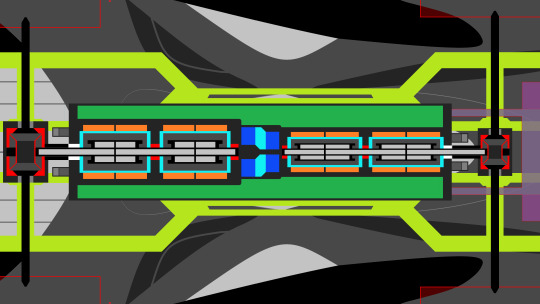
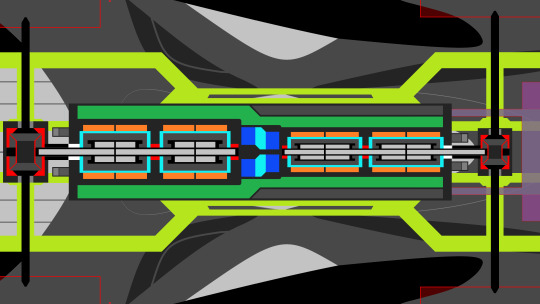

Another substantial weight gain there, still a robust cooling solution, the cooling case stays as is, and becomes reinforced in the front
We had closed the engineering phase too early, weight savings were going to play a key role for the engineering of this car, and it seems the engineering of it is completed now
The new cooling case still contains tens of liters of fluoride, but we have managed to save a lot of it, ie the whole car is less heavier as a result
That's also easier on the pump of the refrigerating unit, and a better energy efficiency
It's difficult to say how much weight we have saved from this block, cooling case, motors and axis, with all of the different weight saving implementations, maybe between 50%
Lets recap what they are
Honeycomb layered copper plates
Aluminum rotor cores and axis
Cooling case redesign
What does it mean for our ATV Buggy, well now all of those wild jumps on tops of sand dunes that you see buggies doing become possible, and we have use for that in Morocco since we already have the sand dunes
A Sahara Edition of the buggy in a neat dark beige color, and a Bombardier ATV Buggy Rally in Southern Morocco, why not
0 notes